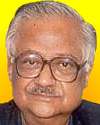
Born 28 Jan 1925; died 24 Sep 2004 at age 79. quotes
Indian nuclear physicist who was picked by Homi Nhabha to help shape India’s nuclear physics and energy programs. Ramanna studied for his PhD at King's College, London, then joined (1 Dec 1949) the Tata Institute of Fundamental Research (TIFR), the root of India’s atomic energy program. While there, he contributed in different areas of neutron, nuclear, and reactor physics. In his later career, he was heading the Bhabha Atomic Research Centre when India carried out its first nuclear test at Pokhran in 1974. Ramanna also oversaw developments in advanced accelerators, lasers, and other technologies. He was a talented pianist, and wrote The Structure of Music in Raga and Western Systems.«
Indian nuclear physicist who was picked by Homi Nhabha to help shape India’s nuclear physics and energy programs. Ramanna studied for his PhD at King's College, London, then joined (1 Dec 1949) the Tata Institute of Fundamental Research (TIFR), the root of India’s atomic energy program. While there, he contributed in different areas of neutron, nuclear, and reactor physics. In his later career, he was heading the Bhabha Atomic Research Centre when India carried out its first nuclear test at Pokhran in 1974. Ramanna also oversaw developments in advanced accelerators, lasers, and other technologies. He was a talented pianist, and wrote The Structure of Music in Raga and Western Systems.«

Born 28 Jan 1922; died 11 Feb 1993 at age 71.
Robert William Holley was an American biochemist who shared the 1968 Nobel Prize in Physiology or Medicine (with Marshall Warren Nirenberg and Har Gobind Khorana). The three scientists independently conducted research that helped to decipher the genetic code chemically and explain how the genetic information stored in the DNA of a cell controls the synthesis of proteins, the building blocks of cells.
Robert William Holley was an American biochemist who shared the 1968 Nobel Prize in Physiology or Medicine (with Marshall Warren Nirenberg and Har Gobind Khorana). The three scientists independently conducted research that helped to decipher the genetic code chemically and explain how the genetic information stored in the DNA of a cell controls the synthesis of proteins, the building blocks of cells.
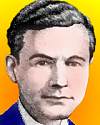
Born 28 Jan 1905; died 23 Oct 1997 at age 92.
Turkish-born American whose over 200 inventions included the TelePrompter, a self-posing portrait camera, automatic postage metering equipment, and an indoor golf practice range. In WW II, his Range Estimation Trainer provided a simulator for pilots to learn to identify aircraft types, their distance and speed. It used synchronized moving mirrors, controlled lighting and a miniature airplane to present various speeds, lighting, and angles. From 1939, he held 20 patents for an early form of an automated teller machine, and in 1960 his Bankograph (US patent No. 3,079,603) was given a trial by New York's First National City Bank (now CitiBank). It was able to take deposits, photograph the money and issue a receipt showing those images.« more
Turkish-born American whose over 200 inventions included the TelePrompter, a self-posing portrait camera, automatic postage metering equipment, and an indoor golf practice range. In WW II, his Range Estimation Trainer provided a simulator for pilots to learn to identify aircraft types, their distance and speed. It used synchronized moving mirrors, controlled lighting and a miniature airplane to present various speeds, lighting, and angles. From 1939, he held 20 patents for an early form of an automated teller machine, and in 1960 his Bankograph (US patent No. 3,079,603) was given a trial by New York's First National City Bank (now CitiBank). It was able to take deposits, photograph the money and issue a receipt showing those images.« more
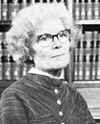
Born 28 Jan 1903; died 1 Apr 1971 at age 68. quotes
British crystallographer (née Yardley) who developed several X-ray techniques for the study of crystal structure. Her experimental determination of the structure of the benzene ring by x-ray diffraction, which showed that all the ring C-C bonds were of the same length and all the internal C-C-C bond angles were 120 degrees, had an enormous impact on organic chemistry. She was the first woman to be elected (1945) to the Royal Society of London.
British crystallographer (née Yardley) who developed several X-ray techniques for the study of crystal structure. Her experimental determination of the structure of the benzene ring by x-ray diffraction, which showed that all the ring C-C bonds were of the same length and all the internal C-C-C bond angles were 120 degrees, had an enormous impact on organic chemistry. She was the first woman to be elected (1945) to the Royal Society of London.
Kathleen Lonsdale: A Biographical Memoir, by Dorothy Crowfoot Hodgkin. - book suggestion.
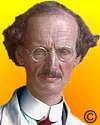
1932
Born 28 Jan 1884; died 24 Mar 1962 at age 78. quotes
Swiss-Belgian physicist who explored both the upper stratosphere and the depths of the sea in ships of his own design. In 1930 he built a balloon to study cosmic rays. In 1932 he developed a new cabin design for balloons and in the same year ascended by balloon in a pressurised gondola to 16,916 m (55,000 feet). On later flights he reached 72,000 feet. He coined the word bathyscaphe for his navigable deep-diving vessel. more
Swiss-Belgian physicist who explored both the upper stratosphere and the depths of the sea in ships of his own design. In 1930 he built a balloon to study cosmic rays. In 1932 he developed a new cabin design for balloons and in the same year ascended by balloon in a pressurised gondola to 16,916 m (55,000 feet). On later flights he reached 72,000 feet. He coined the word bathyscaphe for his navigable deep-diving vessel. more
Between Earth and Sky, by Auguste Piccard. - book suggestion.
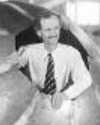
Born 28 Jan 1884; died 28 Jan 1963 at age 79.
Swiss-American chemical engineer and balloonist who conducted stratospheric flights for the purpose of cosmic-ray research. His first balloon ascent (1913) was with his twin brother, Auguste Piccard. With his wife, on 23 Oct 1934, he made the first successful stratosphere flight through clouds, ascending to a height of 11 miles (18 km). In 1936, Piccard flew the first successful plastic film balloon, which he invented and developed, the precursor of the plastic film balloon for high altitude experiments still used for scientific purposes. In 1937, he made an ascent of 11,000 feet (3,350 m) to test a metal gondola attached to a cluster of 98 balloons. He also developed a frost-resistant window for balloon gondolas and an electronic system for emptying ballast bags.
Swiss-American chemical engineer and balloonist who conducted stratospheric flights for the purpose of cosmic-ray research. His first balloon ascent (1913) was with his twin brother, Auguste Piccard. With his wife, on 23 Oct 1934, he made the first successful stratosphere flight through clouds, ascending to a height of 11 miles (18 km). In 1936, Piccard flew the first successful plastic film balloon, which he invented and developed, the precursor of the plastic film balloon for high altitude experiments still used for scientific purposes. In 1937, he made an ascent of 11,000 feet (3,350 m) to test a metal gondola attached to a cluster of 98 balloons. He also developed a frost-resistant window for balloon gondolas and an electronic system for emptying ballast bags.
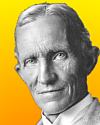
c. 1916
Born 28 Jan 1858; died 28 Aug 1934 at age 76.
Tannatt William Edgeworth David was a Welsh-Australian geologist who produced an extensive study of the geology of Australia, including the first geological map of the Sydney-Newcastle Basin. He also researched the evidence of major glaciations in Australia of the Upper Paleozoic time (from 345- to 225- million years ago). In 1897, he drilled to a depth of 340-m at Funafuti Atoll in an effort to verify Darwin's theory of the formation of coral atolls. Whereas his results supported Darwin's ideas, they were short of absolute proof. He served as scientific officer of the Shackleton Antarctic Expedition from 1907-9, and led the party that first reached the southern magnetic pole on 16 Jan 1909, which was on land at that time.«
Tannatt William Edgeworth David was a Welsh-Australian geologist who produced an extensive study of the geology of Australia, including the first geological map of the Sydney-Newcastle Basin. He also researched the evidence of major glaciations in Australia of the Upper Paleozoic time (from 345- to 225- million years ago). In 1897, he drilled to a depth of 340-m at Funafuti Atoll in an effort to verify Darwin's theory of the formation of coral atolls. Whereas his results supported Darwin's ideas, they were short of absolute proof. He served as scientific officer of the Shackleton Antarctic Expedition from 1907-9, and led the party that first reached the southern magnetic pole on 16 Jan 1909, which was on land at that time.«
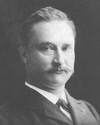
Born 28 Jan 1858; died 16 Dec 1940 at age 82. quotes
Dutch anatomist and geologist who discovered the remains of Java man, the first known fossil of Homo erectus. Dubois was the first person to ever deliberately search for fossils of human ancestors. Only a handful of fossil humans had already been discovered, and those were by chance. Dubois joined the Dutch Army as a medical officer, and used spare time from his medical duties to search for fossils, first in Sumatra and then in Java. He searched on the banks of the Solo River, with two assigned engineers and a crew of convict labourers to help him. After lesser finds, in Oct 1891 he found an intact skullcap, the fossil which would be known as Java Man, and in Aug 1892, an almost complete left thigh bone, was found about 10m away.
Dutch anatomist and geologist who discovered the remains of Java man, the first known fossil of Homo erectus. Dubois was the first person to ever deliberately search for fossils of human ancestors. Only a handful of fossil humans had already been discovered, and those were by chance. Dubois joined the Dutch Army as a medical officer, and used spare time from his medical duties to search for fossils, first in Sumatra and then in Java. He searched on the banks of the Solo River, with two assigned engineers and a crew of convict labourers to help him. After lesser finds, in Oct 1891 he found an intact skullcap, the fossil which would be known as Java Man, and in Aug 1892, an almost complete left thigh bone, was found about 10m away.
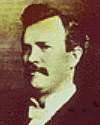
Born 28 Jan 1855; died 15 Sep 1898 at age 43. quotes
American inventor who invented the world's first commercially viable recording adding machine and pioneer of its manufacture. He was inspired by his experience in his beginning career as a bank clerk. On 10 Jan 1885 he submitted his first patent (issued 399,116 on 21 Aug 1888) for his mechanical “calculating machine.” Burroughs co-founded the American Arithmometer Co in 1886 to develop and market the machine. The manufacture of the first machines was contracted out, and their durability was unsatisfactory. He continued to refine his design for accuracy and reliability, receiving more patents in 1892, and began selling the much-improved model for $475 each. By 1895, 284 machines had been sold, mostly to banks, and 1500 by 1900. The company later became Burroughs Corporation (1905) and eventually Unisys.« more
American inventor who invented the world's first commercially viable recording adding machine and pioneer of its manufacture. He was inspired by his experience in his beginning career as a bank clerk. On 10 Jan 1885 he submitted his first patent (issued 399,116 on 21 Aug 1888) for his mechanical “calculating machine.” Burroughs co-founded the American Arithmometer Co in 1886 to develop and market the machine. The manufacture of the first machines was contracted out, and their durability was unsatisfactory. He continued to refine his design for accuracy and reliability, receiving more patents in 1892, and began selling the much-improved model for $475 each. By 1895, 284 machines had been sold, mostly to banks, and 1500 by 1900. The company later became Burroughs Corporation (1905) and eventually Unisys.« more
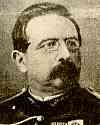
Born 28 Jan 1827; died 6 Oct 1892 at age 65.
French physician who proved tuberculosis to be an infectious disease, transmitted by a specific microorganism from humans and cows to rabbits. As an army doctor he observed that healthy young men from the country developed tuberculosis while living in the close quarters of the barracks. He was aware that glanders, a similar disease in horses, was transmitted by inoculation. So he inoculated a rabbit with tuberculous material from a deceased human patient, tuberculous lesions were found in the rabbit three months later. Before Villemin, many scientists believed that TB was hereditary. In fact, some stubbornly held on to this belief even after Villemin published his results (1867), until the agent Mycobacterium tuberculosis was identified by Robert Koch (1882).
French physician who proved tuberculosis to be an infectious disease, transmitted by a specific microorganism from humans and cows to rabbits. As an army doctor he observed that healthy young men from the country developed tuberculosis while living in the close quarters of the barracks. He was aware that glanders, a similar disease in horses, was transmitted by inoculation. So he inoculated a rabbit with tuberculous material from a deceased human patient, tuberculous lesions were found in the rabbit three months later. Before Villemin, many scientists believed that TB was hereditary. In fact, some stubbornly held on to this belief even after Villemin published his results (1867), until the agent Mycobacterium tuberculosis was identified by Robert Koch (1882).
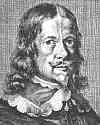
Born 28 Jan 1611; died 28 Jan 1687 at age 76. quotes
German astronomer, who studying in Leiden and established his own observatory on the rooftops of several houses. From four years' telescopic study of the Moon, using telescopes of long focal power, Hevelius compiled Selenographia ("Pictures of the Moon", 1647), an atlas of the Moon with some of the earliest detailed maps. A few of his names for lunar mountains (e.g., the Alps) are still in use, and a lunar crater is named for him. Hevelius is today best remembered for his use of "aerial" telescopes of enormous focal length and his rejection of telescopic sights for stellar observation and positional measurement. He catalogued 1564 stars in Prodromus Astronomiae (1690), discovered four comets, and was one of the first to observe the transit of Mercury. He died on his birthday.
German astronomer, who studying in Leiden and established his own observatory on the rooftops of several houses. From four years' telescopic study of the Moon, using telescopes of long focal power, Hevelius compiled Selenographia ("Pictures of the Moon", 1647), an atlas of the Moon with some of the earliest detailed maps. A few of his names for lunar mountains (e.g., the Alps) are still in use, and a lunar crater is named for him. Hevelius is today best remembered for his use of "aerial" telescopes of enormous focal length and his rejection of telescopic sights for stellar observation and positional measurement. He catalogued 1564 stars in Prodromus Astronomiae (1690), discovered four comets, and was one of the first to observe the transit of Mercury. He died on his birthday.
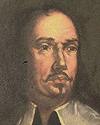
Born 28 Jan 1608; died 31 Dec 1679 at age 71.
Italian mathematician, physiologist and physicist sometimes called “father of biomechanics.” He was the first to apply the laws of mechanics to the muscular action of the human body. In De motu animalium (Concerning Animal Motion, 1680), he correctly described the skeleton and muscles as a system of levers, and explained the mechanism of bird flight. He calculated the forces required for equilibrium in various joints of the body well before the mechanics of Isaac Newton. In 1649, he published a work on malignant fevers. He repudiated astrological causes of diseases and believed in chemical cures. In 1658, he published Euclidus restitutus. He made anatomical dissections, drew a diver's rebreather, investiged volcanoes, was first to suggest a parabolic path for comets, and considered Jupiter had an attractive infuence on its moons.«
Italian mathematician, physiologist and physicist sometimes called “father of biomechanics.” He was the first to apply the laws of mechanics to the muscular action of the human body. In De motu animalium (Concerning Animal Motion, 1680), he correctly described the skeleton and muscles as a system of levers, and explained the mechanism of bird flight. He calculated the forces required for equilibrium in various joints of the body well before the mechanics of Isaac Newton. In 1649, he published a work on malignant fevers. He repudiated astrological causes of diseases and believed in chemical cures. In 1658, he published Euclidus restitutus. He made anatomical dissections, drew a diver's rebreather, investiged volcanoes, was first to suggest a parabolic path for comets, and considered Jupiter had an attractive infuence on its moons.«
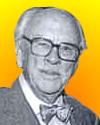
1987
Died 28 Jan 1996 at age 91 (born 4 Sep 1904).
Julian Werner Hill was an American chemist was a U.S. research chemist who discovered cold drawing, a technique of strengthening polymer fibers by stretching. Julian Hill and Wallace Carothers had been building long polymer chains by a reaction of a carboxylic acid with an alcohol to give an ester in a device called a molecular still. While removing a sample of the resultant product from the still, Hill observed that the molten polymer could be drawn into fibers. He then made an important and unexpected discovery - that after being cooled, these pliable filaments could be stretched or "cold drawn" to form very strong fibers. Further tests on the sample showed that it had a molecular weight of over 12,000, far higher than any previous polymer.
Julian Werner Hill was an American chemist was a U.S. research chemist who discovered cold drawing, a technique of strengthening polymer fibers by stretching. Julian Hill and Wallace Carothers had been building long polymer chains by a reaction of a carboxylic acid with an alcohol to give an ester in a device called a molecular still. While removing a sample of the resultant product from the still, Hill observed that the molten polymer could be drawn into fibers. He then made an important and unexpected discovery - that after being cooled, these pliable filaments could be stretched or "cold drawn" to form very strong fibers. Further tests on the sample showed that it had a molecular weight of over 12,000, far higher than any previous polymer.
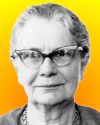
Died 28 Jan 1993 at age 87 (born 1 Aug 1905).
Helen Battles Sawyer Hogg (neé Sawyer) was a Canadian astronomer who located, catalogued and measured the distances to variable stars in globular clusters (stars with cyclical changes of brightness found within huge, dense conglomerations of stars located in the outer halo of the Milky Way galaxy). Her interest in astronomy was spurred when she witnessed a total eclipse of the sun in 1925. Alongside her career work, she was also foremost in Canada in popularizing astronomy, about which she wrote a column in the Toronto Star for thirty years. She was the first woman to become president of the Royal Canadian Institute. In 1989, the observatory at the National Museum of Science and Technology in Ottawa was dedicated in her name.«
Helen Battles Sawyer Hogg (neé Sawyer) was a Canadian astronomer who located, catalogued and measured the distances to variable stars in globular clusters (stars with cyclical changes of brightness found within huge, dense conglomerations of stars located in the outer halo of the Milky Way galaxy). Her interest in astronomy was spurred when she witnessed a total eclipse of the sun in 1925. Alongside her career work, she was also foremost in Canada in popularizing astronomy, about which she wrote a column in the Toronto Star for thirty years. She was the first woman to become president of the Royal Canadian Institute. In 1989, the observatory at the National Museum of Science and Technology in Ottawa was dedicated in her name.«
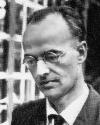
1960
Died 28 Jan 1988 at age 76 (born 29 Dec 1911).
Emil Klaus Julius Fuchs was a German-British physicist who was convicted as a spy on 1 Mar 1950, for passing nuclear research secrets to Russia. He fled from Nazi Germany to Britain. He was interned on the outbreak of WW II, but Prof. Max Born intervened on his behalf. Fuchs was released in 1942, naturalized in 1942 and joined the British atomic bomb research project. From 1943 he worked on the atom bomb with the Manhattan Project at Los Alamos, U.S. By 1945, he was sending secrets to Russia. In 1946, he became head of theoretical physics at Harwell, UK. He was caught, confessed, tried, imprisoned for nine of a 14 year sentence, released on 23 Jun 1959, and moved to East Germany and resumed nuclear research until 1979.«
Emil Klaus Julius Fuchs was a German-British physicist who was convicted as a spy on 1 Mar 1950, for passing nuclear research secrets to Russia. He fled from Nazi Germany to Britain. He was interned on the outbreak of WW II, but Prof. Max Born intervened on his behalf. Fuchs was released in 1942, naturalized in 1942 and joined the British atomic bomb research project. From 1943 he worked on the atom bomb with the Manhattan Project at Los Alamos, U.S. By 1945, he was sending secrets to Russia. In 1946, he became head of theoretical physics at Harwell, UK. He was caught, confessed, tried, imprisoned for nine of a 14 year sentence, released on 23 Jun 1959, and moved to East Germany and resumed nuclear research until 1979.«
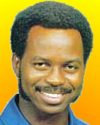
Died 28 Jan 1986 at age 35 (born 21 Oct 1950).
Ronald E(rwin) McNair was an American physicist and astronaut who was the second African American to fly in space.He had been fascinated by space since childhood, when as early as in elementary school he talked about the Sputnik satellite. McNair was nationally recognized for his work in the field of laser physics, including chemical and high-pressure lasers. In 1978, he was one of 35 applicants selected from a pool of 10,000 for NASA's space shuttle program. He was assigned as a mission specialist on the Feb 1984 flight of the shuttle Challenger, during which he orbited the earth 122 times. Sadly, on his second trip, on the morning of 28 Jan 1986, McNair with six other crew members died in an explosion shortly after launching aboard the Challenger.
Ronald E(rwin) McNair was an American physicist and astronaut who was the second African American to fly in space.He had been fascinated by space since childhood, when as early as in elementary school he talked about the Sputnik satellite. McNair was nationally recognized for his work in the field of laser physics, including chemical and high-pressure lasers. In 1978, he was one of 35 applicants selected from a pool of 10,000 for NASA's space shuttle program. He was assigned as a mission specialist on the Feb 1984 flight of the shuttle Challenger, during which he orbited the earth 122 times. Sadly, on his second trip, on the morning of 28 Jan 1986, McNair with six other crew members died in an explosion shortly after launching aboard the Challenger.
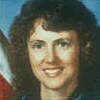
(NASA)
Died 28 Jan 1986 at age 37 (born 2 Sep 1948). quotes
American teacher who was chosen to be the first private citizen in space. Aboard the space shuttle Challenger, she was one of the seven astronauts killed when the rocket exploded 73 seconds after takeoff. The death of McAuliffe and her fellow crew members in the 1986 space shuttle Challenger disaster was deeply felt by the nation and had a strong effect on the U.S. space program. Space shuttle flights were suspended until 1988. An independent U.S. commission blamed the disaster on unusually cold temperatures that morning and the failure of the O-rings, a set of gaskets in the rocket boosters.
American teacher who was chosen to be the first private citizen in space. Aboard the space shuttle Challenger, she was one of the seven astronauts killed when the rocket exploded 73 seconds after takeoff. The death of McAuliffe and her fellow crew members in the 1986 space shuttle Challenger disaster was deeply felt by the nation and had a strong effect on the U.S. space program. Space shuttle flights were suspended until 1988. An independent U.S. commission blamed the disaster on unusually cold temperatures that morning and the failure of the O-rings, a set of gaskets in the rocket boosters.

Died 28 Jan 1963 at age 79 (born 28 Jan 1884).
Swiss-American chemical engineer and balloonist who conducted stratospheric flights for the purpose of cosmic-ray research. His first balloon ascent (1913) was with his twin brother, Auguste Piccard. With his wife, on 23 Oct 1934, he made the first successful stratosphere flight through clouds, ascending to a height of 11 miles (18 km). In 1936, Piccard flew the first successful plastic film balloon, which he invented and developed, the precursor of the plastic film balloon for high altitude experiments still used for scientific purposes. In 1937, he made an ascent of 11,000 feet (3,350 m) to test a metal gondola attached to a cluster of 98 balloons. He also developed a frost-resistant window for balloon gondolas and an electronic system for emptying ballast bags.
Swiss-American chemical engineer and balloonist who conducted stratospheric flights for the purpose of cosmic-ray research. His first balloon ascent (1913) was with his twin brother, Auguste Piccard. With his wife, on 23 Oct 1934, he made the first successful stratosphere flight through clouds, ascending to a height of 11 miles (18 km). In 1936, Piccard flew the first successful plastic film balloon, which he invented and developed, the precursor of the plastic film balloon for high altitude experiments still used for scientific purposes. In 1937, he made an ascent of 11,000 feet (3,350 m) to test a metal gondola attached to a cluster of 98 balloons. He also developed a frost-resistant window for balloon gondolas and an electronic system for emptying ballast bags.
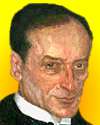
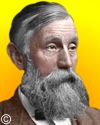
Died 28 Jan 1907 at age 70 (born 8 Mar 1836). quotes
English physiologist and educator who introduced modern methods of teaching biology and physiology that emphasized laboratory training and became standard in the teaching of the biological sciences in English universities. As Foster's Royal Society obituary said, “He insisted that practical work, carried on by the student himself, illustrative of the facts on which the lecture was based, must immediately follow the lecture. (In this he was following principles used by Huxley). The physiology of each organ must be dealt with as a whole in the lecture, and the practical work must be so arranged as to bring home to the student all of the points of each lecture at the time. His ideal laboratory would be of sufficient size to provide each student with his own working place, both in the histological and in the chemical department at the same time.” He also studied if the heartbeat is either dependant on nerve impulses, or any degree of independance if the heart muscles have their own capability for rhythmic contraction.
English physiologist and educator who introduced modern methods of teaching biology and physiology that emphasized laboratory training and became standard in the teaching of the biological sciences in English universities. As Foster's Royal Society obituary said, “He insisted that practical work, carried on by the student himself, illustrative of the facts on which the lecture was based, must immediately follow the lecture. (In this he was following principles used by Huxley). The physiology of each organ must be dealt with as a whole in the lecture, and the practical work must be so arranged as to bring home to the student all of the points of each lecture at the time. His ideal laboratory would be of sufficient size to provide each student with his own working place, both in the histological and in the chemical department at the same time.” He also studied if the heartbeat is either dependant on nerve impulses, or any degree of independance if the heart muscles have their own capability for rhythmic contraction.
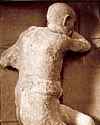
Died 28 Jan 1896 at age 72 (born 8 Jun 1823).
Italian archaeologist whose systematic excavation at Pompeii helped to preserve much of the ancient city as nearly intact as possible and contributed significantly to modern archaeological methods. Fiorelli's initial work at Pompeii was completed in 1848. With his next excavations at Pompeii (1860), he pioneered his meticulous method of studying archaeological strata; observation, recording, preservation (including building a museum), and reporting were its fundamental features. In particular he studied the materials and building methods utilized at Pompeii. It was his idea to pour liquid plaster into the spaces left by decomposed bodies in the beds of ashes to produce casts representing the original victims.
Italian archaeologist whose systematic excavation at Pompeii helped to preserve much of the ancient city as nearly intact as possible and contributed significantly to modern archaeological methods. Fiorelli's initial work at Pompeii was completed in 1848. With his next excavations at Pompeii (1860), he pioneered his meticulous method of studying archaeological strata; observation, recording, preservation (including building a museum), and reporting were its fundamental features. In particular he studied the materials and building methods utilized at Pompeii. It was his idea to pour liquid plaster into the spaces left by decomposed bodies in the beds of ashes to produce casts representing the original victims.
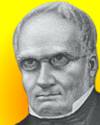
Died 28 Jan 1871 at age 69 (born 15 Apr 1801).
Édouard Armand Isidore Hippolyte Lartet was a French paleontologist and archaeologist who was a pioneer of Paleolithic archaeology, the emerging science of human paleontology. He first trained as a lawyer, but developed instead an interest in the natural sciences, and pursued discoveries in fossil beds. From 1863, he collaborated with Henry Christy to systematically explore and excavate cave deposits for evidence of early humans. Carved and sculpted relics thus uncovered represent man’s earliest art objects. His most striking cave discovery was a mammoth tusk engraved with a drawing of a mammoth—clear proof that man lived at the same time as the mammoth. His son, Louis Lartet also studied prehistory, but eventually became a professor of geology.«
Édouard Armand Isidore Hippolyte Lartet was a French paleontologist and archaeologist who was a pioneer of Paleolithic archaeology, the emerging science of human paleontology. He first trained as a lawyer, but developed instead an interest in the natural sciences, and pursued discoveries in fossil beds. From 1863, he collaborated with Henry Christy to systematically explore and excavate cave deposits for evidence of early humans. Carved and sculpted relics thus uncovered represent man’s earliest art objects. His most striking cave discovery was a mammoth tusk engraved with a drawing of a mammoth—clear proof that man lived at the same time as the mammoth. His son, Louis Lartet also studied prehistory, but eventually became a professor of geology.«
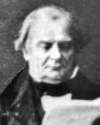
Died 28 Jan 1864 at age 64 (born 26 Feb 1799).
French engineer who expressed Sadi Carnot's ideas on heat analytically, with the help of graphical representations. While investigating the operation of steam engines, Clapeyron found there was a relationship (1834) between the heat of vaporization of a fluid, its temperature and the increase in its volume upon vaporization. Made more general by Clausius, it is now known as the Clausius-Clapeyron formula. It provided the basis of the second law of thermodynamics. In engineering, Clayeyron designed and built locomotives and metal bridges. He also served on a committee investigating the construction of the Suez Canal and on a committee which considered how steam engines could be used in the navy.
French engineer who expressed Sadi Carnot's ideas on heat analytically, with the help of graphical representations. While investigating the operation of steam engines, Clapeyron found there was a relationship (1834) between the heat of vaporization of a fluid, its temperature and the increase in its volume upon vaporization. Made more general by Clausius, it is now known as the Clausius-Clapeyron formula. It provided the basis of the second law of thermodynamics. In engineering, Clayeyron designed and built locomotives and metal bridges. He also served on a committee investigating the construction of the Suez Canal and on a committee which considered how steam engines could be used in the navy.
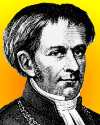
Died 28 Jan 1859 at age 74 (born 23 Jan 1785).
Swedish botanist and mathematician whose Synopsis alagarum Scandinaviae of 1817 presented a new systematic survey of all algae. Working with Schelling, whom he met at Karlsbad mineral springs, he studied the algae found in the hot springs. Algardh revealed the life cycle of these algae. Later, he expanded his field from taxonomy to writing on plant physiology and plant anatomy. He gave up this career when, in 1834, he was appointed the bishop in Karlstad.«
Swedish botanist and mathematician whose Synopsis alagarum Scandinaviae of 1817 presented a new systematic survey of all algae. Working with Schelling, whom he met at Karlsbad mineral springs, he studied the algae found in the hot springs. Algardh revealed the life cycle of these algae. Later, he expanded his field from taxonomy to writing on plant physiology and plant anatomy. He gave up this career when, in 1834, he was appointed the bishop in Karlstad.«
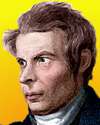
Died 28 Jan 1829 at age 40 (born 22 Aug 1788). quotes
English railway engineer and writer who started as a cabinet-maker, then studied architecture and engineering, and by 1823 started private practice as a civil engineer. His book Elementary Principles of Carpentry (1820) was the first serious manual on the subject, including the strength of timber. He also wrote manuals on the Strength of Cast Iron (1821), extending the investigations of Thomas Young, heating of buildings, and The Steam Engine: its invention and progressive improvement. (1827). Five years before the first passenger train began service, his book on railways, Practical Treatise on Rail-Roads and Carriages (1825), also assessed the economic value of this 19th century breakthrough technology over that of canals and roads.«
English railway engineer and writer who started as a cabinet-maker, then studied architecture and engineering, and by 1823 started private practice as a civil engineer. His book Elementary Principles of Carpentry (1820) was the first serious manual on the subject, including the strength of timber. He also wrote manuals on the Strength of Cast Iron (1821), extending the investigations of Thomas Young, heating of buildings, and The Steam Engine: its invention and progressive improvement. (1827). Five years before the first passenger train began service, his book on railways, Practical Treatise on Rail-Roads and Carriages (1825), also assessed the economic value of this 19th century breakthrough technology over that of canals and roads.«

Died 28 Jan 1687 at age 76 (born 28 Jan 1611). quotes
German astronomer, who studying in Leiden and established his own observatory on the rooftops of several houses. From four years' telescopic study of the Moon, using telescopes of long focal power, Hevelius compiled Selenographia ("Pictures of the Moon", 1647), an atlas of the Moon with some of the earliest detailed maps. A few of his names for lunar mountains (e.g., the Alps) are still in use, and a lunar crater is named for him. Hevelius is today best remembered for his use of "aerial" telescopes of enormous focal length and his rejection of telescopic sights for stellar observation and positional measurement. He catalogued 1564 stars in Prodromus Astronomiae (1690), discovered four comets, and was one of the first to observe the transit of Mercury. He died on his birthday.
German astronomer, who studying in Leiden and established his own observatory on the rooftops of several houses. From four years' telescopic study of the Moon, using telescopes of long focal power, Hevelius compiled Selenographia ("Pictures of the Moon", 1647), an atlas of the Moon with some of the earliest detailed maps. A few of his names for lunar mountains (e.g., the Alps) are still in use, and a lunar crater is named for him. Hevelius is today best remembered for his use of "aerial" telescopes of enormous focal length and his rejection of telescopic sights for stellar observation and positional measurement. He catalogued 1564 stars in Prodromus Astronomiae (1690), discovered four comets, and was one of the first to observe the transit of Mercury. He died on his birthday.
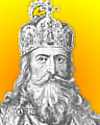
Died 28 Jan 814 (born c. 2 Apr 742).
Frankish emperor who began educational reform. In 789, he started the establishment of schools teaching elements of mathematics, grammar, music and ecclesiastic subjects. Every monastery and abbey was expected to have a school for the education of the boys of the surrounding villages. Thus, he wished to replace the ignorance of the population in his realm with the ability to become more prosperous. The tradition of learning he initiated led to the expansion of medieval scholarship in the 12th-century Renaissance.«[a.k.a. Charles the Great, Carolus Magnus, Karolus Magnus, Karl der Grosse. The date and place of birth are uncertain and sources differ.]
Frankish emperor who began educational reform. In 789, he started the establishment of schools teaching elements of mathematics, grammar, music and ecclesiastic subjects. Every monastery and abbey was expected to have a school for the education of the boys of the surrounding villages. Thus, he wished to replace the ignorance of the population in his realm with the ability to become more prosperous. The tradition of learning he initiated led to the expansion of medieval scholarship in the 12th-century Renaissance.«[a.k.a. Charles the Great, Carolus Magnus, Karolus Magnus, Karl der Grosse. The date and place of birth are uncertain and sources differ.]

In 2000, after decades of denial, a U.S. government study conceded that cancer and premature deaths of workers at 14 nuclear weapons plants since WW II were caused by radiation and chemicals. Energy Secretary Bill Richardson said “This is the first time the government is acknowledging that people got cancer from radiation exposure in the plants.” Since the mid-1960s, ignoring epidemiological studies, the government had denied any such link. In Jul 1999, the government accepted that a lung disease of some workers was caused by breathing beryllium dust. President Clinton ordered a broader study of the effects of radiation and chemicals at nuclear weapons plants. He signed a compensation bill on 30 Oct 2000.«
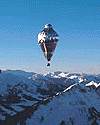
In 1998, Andy Nelson and navigator Bertrand Piccard, in the Breitling Orbiter II set the world record for endurance at nine days and 17 hours - or, to be exact, 233 hours and 55 minutes. But the journey was stopped when they were not allowed to over-fly China. The preparation took more than four years with a team of 13 people. Bertrand is the grandson of the balloon flight pioneer, Auguste Piccard. With Brian Jones, Bertrand accomplished the first complete non-stop round-the-world flight on 21 Mar 1999 in the Breitling Orbiter 3.
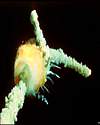
In 1986, the space shuttle Challenger exploded catastrophically in midair, 73 seconds after takeoff. The crew of seven all died, including Christa McAuliffe, the first teacher on NASA’s launch schedule. The weather had been so unusually cold, icicles hung on the launch structure. A rubber seal on a booster rocket had lost elasticity because of the unplanned low temperature, and hot gases exploded out through it. Engineers at Morton Thiokol, the rocket manufacturer, had tried to stop the launch, predicting this danger, but NASA officials decided to go ahead, instead of holding for warmer weather. A presidential commission found flaws in the space agency’s decision-making process.«
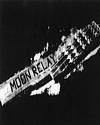

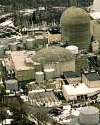
In 1958, the first privately-owned thorium-uranium atomic reactor to supply power began construction at Buchanan, N.Y. The Consolidated Edison Company's Indian Point 1 nuclear generating station was the first designed to utillize uranium-235 supplemented with thorium-232. It was designed by the Babcock and Wilcox Co., and built at a cost of $100 million on the site of a former amusement park. Its pressurized water reactor produced 275,000 kW of power for part of the New York metropolitan area. The Indian Point 1 operating licence was dated 26 Mar 1962. It began generating power on 16 Sep 1962. It was shut down on 31 Oct 1974.because it lacked an emergency cooling system for the reactor core.«[Image: Indian Point Unit 1 reactor at centre of picture, with one of the other two Indian Point reactors behind it.]
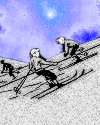
In 1934, the first ski tow rope in the U.S., built by Robert Royce, was used for the first time in Woodstock, Vermont to enable snow skiers to easily reach the top of the mountain. His idea was based on one he had heard was operating since 1932 in Shawbridge, Quebec. The Woodstock tow rope was built by David Dodd of South Newbury in less than 2 weeks for under $500. About 2500 feet of 7/8-in manilla rope was spliced in a loop, passed over pulleys and around a wheel attached to a Model T ford engine. The tow rope ran 900-ft up the hill, easily hauling up to 5 skiers holding on to it up the slope in a minute. The enthusiasts enjoyed riding the tow rope up the hill, adding to the thrill of the downhill journey.«[Image: from an early advertisement for another ski tow that opened in New Hampshire the following year.]
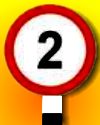
In 1896, the first speeding fine was handed out to a British motorist. Walter Arnold of East Peckham in Kent, was caught doing 8 mph in a 2 mph built up zone, and was fined one shilling. That speed limit had been in force since 1865 when the Locomotive Act (Red Flag Act) introduced a speed limit of 2 mph in built up zones (meaning towns and villages) and 4 mph elsewhere. The speed limit was raised to 20 mph in 1903, and to 30 mph within built up areas in 1934, which it has remained ever since.«[Image: A modern speed limit sign, as it might now show a 2 mph limit.]
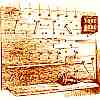
In 1878, the first commercial telephone exchange in the U.S. was installed at New Haven, Connecticut, and served 21 subscribers connected by a single strand of iron wire. For the first six weeks, the exchange was not operated at night. Instead of "hello," the first experimental shout was "Ahoy, ahoy." The first operator was George W. Coy. A Bell franchise had been awarded for New Haven and Middlesex Counties to Coy on 3 Nov 1877, paid for by incorporating as a company with two financial partners. Coy improvised his first crude switchboard, using carriage bolts, handles from teapot lids and bustle wire. The concept of interconnecting phone wires had been tried before by three other men, but none of these men attempted commercial telephone operations.
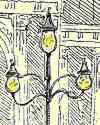
In 1807, London's Pall Mall became the first street of any city to be illuminated by gaslight. By 1823 nearly 40,000 lamps had been installed in 215 miles of London streets. Earlier, in 1804, Frederick Albert Windsor, a German entrepreneur, demonstrated and lectured on gas light at the Lyceum Theatre in London. His main interest in gas was for street lighting. Windsor acquired a house in Pall Mall, London and on 4 Jun 1807, the King's birthday, he exhibited lights and a gas-lit transparency along the walls. In 1809-10, Windsor established the first public gas company, The Gas Light and Coke Company, which remained in existence until the company was nationalized in 1948. Other British cities followed London's lead, and installed gas street lamps. For example, Glasgow, Scotland, lit their first on 5 Sep 1818.
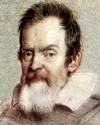
Galileo
In 1613, Galileo may have unknowingly viewed the undiscovered planet of Neptune. His observing records show a "star" that doesn't appear in modern star catalogues.When it happened to be very near Jupiter, he thought it was just a star. On two successive nights he actually noticed that it moved slightly with respect to another nearby star. But on the subsequent nights it was out of his field of view. Had he seen it on the previous few nights Neptune's motion would have been obvious to him. Unfortunately, cloudy skies prevented obsevations on those few critical days. Since Galle made his acknowledged discovery on 23 Sep 1846, Neptune has only completed about one orbit around the Sun, which takes 164 years and 280 days.
Galileo: A Life, by James Reston. - book suggestion.




